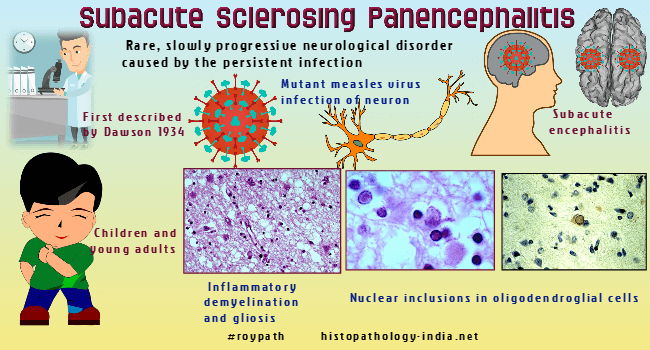|

Custom Search
|
|
Infectious Disease Online Pathology of Subacute Sclerosing Panencephalitis
|
|
|

| Subacute
sclerosing panencephalitis was first described by Dawson in 1934.
It is a rare, slowly progressive neurological disorder caused by the persistent infection with measles virus. Related post: Measles Age: Children and young adults. Gross: The gross changes are usually mild. Cortical atrophy, demyelination and ventricular dilatation may be present.
Electron microscopy: Inclusions are seen to contain tubular paramyxovirus-like nucleocapsids.
|

